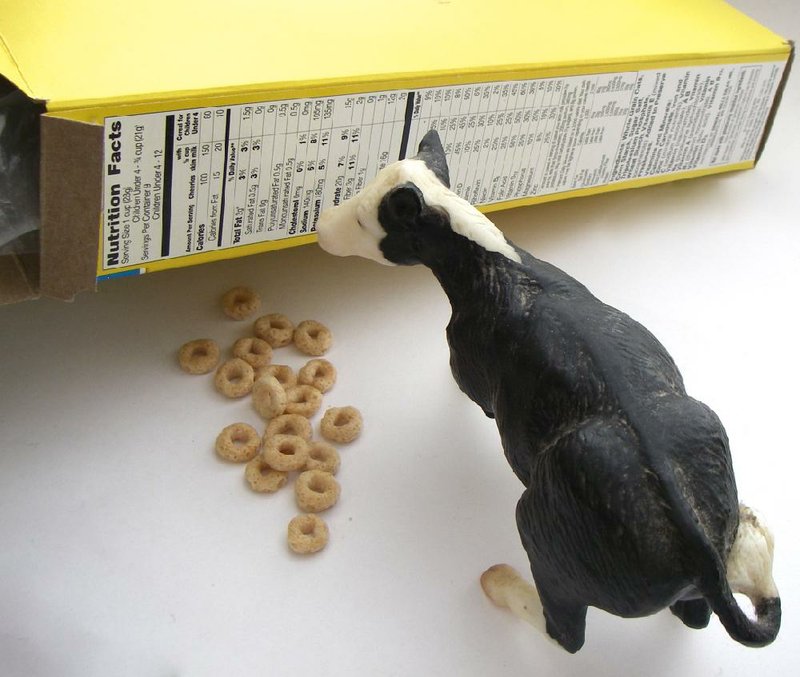When milk marketers went searching for a replacement for their aging "Got Milk?" campaign, they asked 2,500 teens and adults what promise would make milk more appetizing than juice, water or soda.
Calcium fell flat. So did the notion that milk is the "original superfood."
And what about the fact that milk is a bargain at 25 cents per glass?
Meh.
The resounding winner: eight grams of protein per glass.
And thus a $50 million "Milk Life" campaign was born this year, featuring people happily at play under the slogan that "this is what eight grams of protein can do."
Indeed, protein has never been more popular. Enticed by various promises -- helping with weight loss, improving strength, delaying age-related muscle loss -- about 71 percent of consumers say they want more of it in their diets, reports the NPD Group, a New York research firm.
And retailers are rushing to add protein to foods such as cereal and granola bars, and promote the
naturally high-protein content of foods such as nuts, beef jerky and Greek yogurt. There has been a 54 percent increase in the number of new products with a high-protein or vegan claim since 2008, according to Mintel, a Chicago research firm. Just in the past year, there was a 49 percent increase in snacks making high-protein claims, Mintel says.
Why did protein become the nutrient du jour? And will it be just another diet craze -- like the fat-free frenzy of the 1980s -- that ultimately leaves consumers confused about why they spend so much time and energy dieting and yet are farther than ever from their desired weights?
For sure, we consumers are gluttons for dieting advice, especially advice that focuses on a specific supernutrient that promises to make extra pounds and health problems disappear. Some 51 percent of adults want to lose weight, according to one Gallup Poll, yet barely half that amount -- 25 percent -- are actively working on it.
So why is protein trending?
Scientists have long known that protein is an essential nutrient for bodies building muscle, and it provides a feeling of fullness that can persuade dieters to eat lesser amounts of food. Much publicized studies linking protein-rich diets to weight loss have kept that idea in the spotlight -- Paleo, Atkins, the Zone and other low-carbohydrate diets.
Protein's popularity might have more staying power than other food crazes, says Darren Seifer, a food and beverage analyst for the NPD Group.
In contrast to the fat-free, sugar-free and gluten-free fads, which revolved around restraint and avoidance, protein has to do with eating and drinking more of it. And people like that.
"It's not restrictive," Seifer says. And because consumers have been hearing that protein is good for them since elementary school, the trend might be more enduring than the pushes for high fiber, whole grains and Omega-3 fatty acids, which abruptly came into and out of vogue.
"Consumers just want to know, is it good or is it bad?" Seifer says. "If you can whittle it down and make it simple for the consumer, the trend could take off."
HOW MUCH?
But even as the public clamors for protein, about 71 percent of consumers don't know how much they should get, or what foods have it, according to the NPD survey.
The average healthy person needs about 0.8 grams per kilogram (or 2.2 pounds) of body weight, according to U.S. Agriculture Department recommendations.
And most people get enough in their normal eating regimens -- they don't need to add more.
"It's not a nutrient that's of grave concern," says registered dietitian Andrea Giancoli, a policy analyst for the Beach Cities Health District in California. "Protein in and of itself isn't going to make you into a supermodel, get you to your ideal weight or make you into a lean, mean machine. You actually have to exercise and do the work to build that muscle."
What's more, if you eat more protein than you need, it's just going to be stored as fat.
TOO MUCH BECOMES FAT
Giancoli notes that, in their quest to shed pounds and get stronger, consumers might start eating more foods such as red meat that, though high in protein, also have lots of saturated fat. They also might reach for protein supplements and protein-enriched foods, which have additives and calories they don't need.
The addition of protein often comes along with artificial additives, plus sugar, fat and sodium to make the product, which is often calorie-dense, taste good. Giancoli says consumers should carefully inspect the nutrition facts panels on packaged products before they buy.
A 1 ¼-cup serving of Cheerios Protein, for instance, has 7 grams of protein -- more than the 4 grams of protein in original Cheerios.
But it also has more calories and more sugar.
And as tough as it is to resist the temptation of a protein-packed, and therefore guilt-free, indulgence, we have to look past the claims on the front of the label. That Caramel Nut Rush Marathon Protein Bar might have 20 grams of protein, but it also has 290 calories, 9 grams of fat and 22 grams of sugar.
"If you're consuming more calories than the body can burn off, you're going to gain weight," Giancoli says. "It doesn't matter what nutrient it is."
ActiveStyle on 08/25/2014
